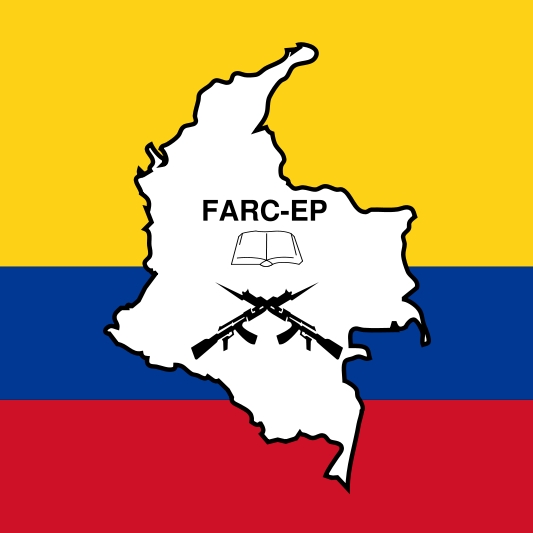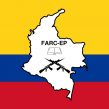
Is the End in Sight for Colombia’s FARC Insurgency?
Publication: Terrorism Monitor Volume: 12 Issue: 8
By:

Colombia’s Marxist Fuerzas Armadas Revolucionarias de Colombia (FARC) began its armed struggle in 1964. Fifty years later, FARC representatives and Colombian government officials are negotiating in Havana in peace talks initiated in 2012 by Colombian President Juan Manuel Santos. Santos, facing reelection in May, is promoting a negotiated end to the world’s longest civil war, remarking: "Hopefully by the end of the year, we will have this deal done" (The Guardian, March 16).
Santos rose to prominence as minister of defense in the right wing administration of President Álvaro Uribe (2002-2010). He later infuriated his former mentor after being elected president in June 2010, when he declared Venezuelan President Hugo Chávez to be his “new best friend” and then two years later began peace talks with FARC. Following exploratory talks, the two sides reached agreement on six key agenda points. Two of the six agenda items have been settled: political participation and agrarian reform.
FARC said it was participating in the talks to embrace “the immense clamor for peace from different sectors of Colombia…” [1] The reality, however, is a growing awareness in FARC‘s decimated leadership that, after fifty years of armed struggle, its original Marxist hopes of overthrowing the Colombian government and its U.S. funded military remain as distant as ever. The movement’s ideological purity has been sullied by involvement in the lucrative drug trade and a policy of kidnapping for ransom has also alienated many Colombians. Furthermore, FARC is losing members; at its height in 2002, FARC could field 18,000 guerrillas (The Economist, July 7). Current estimates suggest FARC can field only 8,000 fighters (El Nuevo Herald [Miami], March 26). A peace agreement would allow FARC to contest elections, where the movement might have some success in the still disaffected countryside.
Santos has been criticized by opposition presidential candidates for his decision to negotiate with FARC rather than defeat them militarily. Candidate Óscar Iván Zuluaga said, “I’m in favor of a negotiated peace but we have to set conditions” (The Miami Herald, April 4). Enrique Peñalosa, another candidate remarked, “I fully support the negotiations in Havana, but it is good to remember that one of the characteristics of these negotiations is that there is no truce” (La F.M. [Bogotá], April 10). Ex-president Uribe is also critical of his former protégé, insisting that FARC agree to a ceasefire prior to talks continuing (Colombia Opina, April 4).
Seeking to project a tough image, President Santos said on March 30 that military offensives against FARC would continue “until the time we get these (peace) agreements” (El Espectador [Bogotá], March 30). Peace is popular; a 2012 poll taken shortly after the peace talks began reported that 77 percent of respondents approved of the negotiations. [2]
The human cost of FARC’s fifty-year campaign has been immense. On July 24, 2013, Colombia’s government truth commission issued a 434-page report entitled ¡Basta Ya! Colombia: memorias de guerra y dignidad (Enough! Colombia: Memories of War and Dignity). The report estimated that 220,000 Colombians were killed during Colombia’s 54-year civil conflict. [3] The Colombian government reports that the conflict has additionally produced nearly 3.5 million internally displaced people (IDPs). [4] Colombia’s National Planning Department believes that after a peace agreement, the Colombian economy would grow by an additional one to two percent annually. [5]
Many obstacles remain as skirmishing continues. On April 8 four people died in a dawn ambush in Cartagena del Chaira, with Santos calling the attack “the vile product of this senseless war that we are striving to end” (Prensa Libre [Guatemala City], April 8). Two days earlier, suspected FARC guerrillas from the Jacobo Arenas Front dynamited a stretch of the Pan-American Highway between Santander de Quilichao and Mondomo in Cauca department (El País [Cali, Colombia], April 1).
One of the more intractable negotiating issues is Colombia’s illegal drug cultivation and trafficking, with both sides being disingenuous. Washington is in no doubt of FARC’s participation; on March 22, 2006 the U.S. Department of Justice unsealed an indictment issued by a federal grand jury in the D.C. District Court that charged 50 FARC leaders with importing more than $25 billion of cocaine into the United States and other countries. [6]
Pablo Escobar’s former mistress, Virginia Vallejo, claimed during a 2007 interview that the late drug kingpin idolized Uribe and that Uribe granted dozens of licenses for runways and hundreds of permits for planes and helicopters during the period 1980-1982, when Uribe was Colombia’s civil aviation director. This provided the infrastructure on which Colombia’s drug trade was built. Vallejo asserted, “Pablo used to say that if it weren’t for that ‘blessed little boy,’ we would have to swim to Miami to get drugs to the gringos” (El País [Miami], October 14, 2007).
Vallejo’s credibility is underlined by the fact that on July 18, 2006, the U.S. Drug Enforcement Agency flew her to Miami to testify in drug cartel cases. The United States subsequently granted Vallejo political asylum on June 3, 2010 and her assertions bolstered a 1991 “confidential” intelligence report from U.S. Defense Intelligence Agency officials in Colombia that stated Uribe was a “close personal friend of Pablo Escobar” who was “dedicated to collaboration with the Medellín cartel at high government levels.” [7]
Hurdles remain, among them a definitive agreement on land reform. In commenting on the Havana talks, FARC negotiating team member Commandante Ricardo Téllez (a.k.a. Rodrigo Granda) noted that land is increasingly concentrated in the hands of the wealthy and five percent of landowners now own 87 percent of the country’s acreage (El Telégrafo, [Paysandú, Uruguay], April 6). A major concern for Téllez is that Santos “lacks greater political will” to impose a settlement on the “enemies of peace,” among whom he lists Uribe. Téllez suggests that these opponents are “grouped on the far right and still powerful, even though they are just a minority that profits from war and wants to continue it” (El Espectador [Bogotá], April 6).
While any deal reached could provide an important accomplishment for FARC leaders to showcase to their rank and file, enforcing a peace accord throughout FARC’s ranks will face the problem of a centralized command and control structure that has been weakened by more than a decade of government offensives.
For his part, Santos has to maintain an image of toughness as he negotiates. During an April 10 interview, Santos said he knows “more or less” where FARC leader Rodrigo Londoño is hiding, commenting, “I’m not going to say I would take the decision [to kill Londoño] or not take it, but I think that at this stage of the process I’d think twice” (La F.M. [Bogotá], April 10).
On February 28 FARC lead negotiator Iván Márquez said they were asking the United States to the talks to speed up the process because “Washington was making all the important decisions anyway.” He continued, “We are discussing a matter of interest to the United States… The U.S. government is determining whether anything actually happens here or not, so we’d like to talk to the U.S. government … We would reach an agreement soon” (Reuters, February 28).
Pre-presidential election polls in Colombia indicate that the Colombian population is overwhelmingly in favor of peace. Whether the pragmatic compromise necessary to achieve a final peace agreement will be derailed by political posturing remains to be seen, but on May 25 the Colombian electorate will deliver their mandate.
Dr. John C. K. Daly is a Eurasian foreign affairs and defense policy expert for The Jamestown Foundation and a non-resident fellow at the Central Asia-Caucasus Institute in Washington DC.
Notes
1. “Abriendo senderos hacia la paz,” Comunicados, Secretariado del Estado Mayor Central de las FARC-EP, Montañas de Colombia, November 19, 2012.
2. “QAP Colombia Opina 2012-2013: Especial proceso de paz,” Ipsos Study no. 9103, 2012.
3. ¡Basta Ya! Colombia: memorias de guerra y dignidad, Bogotá: Centro de Memoria Histórica, 2012, pp.434.
4. “A refugee in their own country – the fate of the Colombian IDPs,” United Nations Regional Information Centre for Western Europe, Brussels, 2014, https://www.unric.org/en/colombia/27002-a-refugee-in-their-own-country-the-fate-of-the-colombian-idps-.
5. “Weekly review of the Colombian economy,” September 23-27 2013, U.S. Embassy, Bogotá, https://usbusiness-opportunities-embassybogota.com/2013/09/30/weekly-review-of-the-colombian-economy-september-23-27/.
6. “U.S. Charges 50 Leaders Of Narco-Terrorist FARC In Colombia With Supplying More Than Half Of The World’s Cocaine,” U.S. Department of Justice, March 22, 2006, https://www.justice.gov/opa/pr/2006/March/06_crm_163.html.
7. George Washington University National Security Archive, https://www2.gwu.edu/~nsarchiv/NSAEBB/NSAEBB131/dia910923.pdf, p.10.





